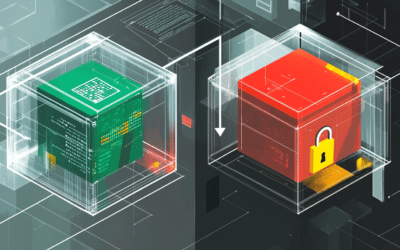
TEM is Dead! Long Live TEM!
JUL, 2023
by Jane Temov.
Jane Temov is an IT Environments Evangelist at Enov8, specializing in IT and Test Environment Management, Test Data Management, Data Security, Disaster Recovery, Release Management, Service Resilience, Configuration Management, DevOps, and Infrastructure/Cloud Migration. Jane is passionate about helping organizations optimize their IT environments for maximum efficiency.
Introduction
In the fast-paced world of software development and digital transformation, the role of Test Environment Management (TEM) has been a critical aspect of ensuring the quality and reliability of software applications. However, with the evolving landscape of technology and the increasing complexity of IT environments, some have questioned whether traditional TEM practices are still relevant.
Enov8 IT & Test Environment Manager
*Innovate with Enov8
Streamlining delivery through effective transparency & control of your IT & Test Environments.
In this post, we’ll explore the question, “Is Test Environment Management dead?” and shed light on why it’s not dead, but rather, it needs to adapt and transform to meet the demands of modern software development. We’ll also discuss how the Enov8 Environment Manager provides the perfect toolset to drive this transformation and empower organizations to excel in their software delivery.
Is Test Environment Management Dead?
As organizations race to keep up with the rapid pace of technological advancements, some have speculated that Test Environment Management might have become obsolete. The argument goes that modern development practices, such as Agile and DevOps, have minimized the importance of traditional testing methods, including Test Environment Management. Additionally, the rise of cloud-based infrastructure and containerization has made it easier to spin up and tear down test environments on demand, seemingly reducing the need for comprehensive TEM practices.
However, such notions couldn’t be further from the truth. While the landscape of software development has evolved, the significance of effective Test Environment Management remains as crucial as ever. Organizations still face challenges in managing the various testing environments, coordinating resources efficiently, and ensuring accurate representations of production setups for comprehensive testing. Neglecting proper Test Environment Management can lead to detrimental consequences, including increased costs, delays in software delivery, and compromised product quality.
The Evolution of Test Environment Management
Test Environment Management, similar to Enterprise Architecture, was once considered a revolutionary discipline, ensuring that testing environments aligned with business needs and objectives. However, as technology continued to advance, the challenges and complexities in managing test environments grew exponentially. The traditional TEM approaches often involved manual processes, lack of coordination, and limited insights into environment health, leading to bottlenecks and inefficiencies in the testing process.
The Primary Benefits of Good Test Environment Management
Effective Test Environment Management yields several significant benefits that play a crucial role in an organization’s success in software development and delivery:
1. IT Cost Optimization: Haphazard and poorly managed test environments can result in wasteful resource allocation and increased infrastructure costs. In contrast, a well-managed Test Environment provides better visibility into resource utilization, identifies redundant environments, and ensures efficient allocation of resources. Enov8 Environment Manager’s centralized planning and coordination capabilities empower organizations to optimize IT costs by eliminating resource wastage and aligning environment usage with actual project needs.
2. Streamlined Delivery: Test Environment Management plays a vital role in the software development life cycle. Streamlining the process of provisioning, configuring, and managing test environments reduces delays and bottlenecks in the testing phase. Enov8’s DevOps integration capabilities facilitate seamless and automated environment provisioning, accelerating the software delivery process. By having test environments available on-demand and configured accurately, development and testing teams can work efficiently and deliver software faster.
3. Higher Quality through Stabilization and Accuracy: Stable and accurate test environments are crucial for reliable testing results. Inadequate test environments may lead to false positives, false negatives, and an inability to replicate production issues. Enov8 Environment Manager’s architectural blue-printing and modeling capabilities allow organizations to understand and manage environment dependencies effectively. With access to up-to-date information through the SDLC/Delivery-Aware CMDB, teams can create precise and realistic test environments that mirror the production environment, leading to higher-quality testing outcomes.
Key Features of Enov8 Environment Manager
1. Architectural Blue-Printing/Modelling: Enov8 provides a comprehensive blueprinting and modeling capability that enables organizations to visualize their test environments. This gives teams a clear understanding of environment dependencies and helps in planning for efficient testing cycles.
2. SDLC/Delivery-Aware CMDB: With Enov8, Test Environment Management becomes an integral part of the Software Development Life Cycle (SDLC). The Configuration Management Database (CMDB) ensures that each environment is accurately tracked, and teams have access to up-to-date information for better decision-making.
3. Centralized Planning & Coordination: Enov8 Environment Manager centralizes the planning and coordination of test environments, eliminating silos and ensuring that resources are utilized optimally across projects.
4. Demand/Booking Management: The platform empowers teams to request and book test environments on-demand, streamlining the process and reducing lead time for testing.
5. Operational Standardization via Implementation Plans: Enov8 allows organizations to establish operational standards across environments through implementation plans. This ensures consistency and reliability throughout the testing process.
6. DevOps Pipelines: By integrating with DevOps pipelines, Enov8 facilitates seamless and automated environment provisioning, accelerating the software delivery process.
7. System Health Checks & Information Walls for Insights: With Enov8, organizations gain valuable insights into environment health through system health checks and information walls. This enables proactive issue resolution and enhances the overall quality of testing.
Conclusion
In conclusion, Test Environment Management is far from dead; it has evolved and transformed into a critical discipline that organizations must embrace to succeed in today’s competitive digital landscape. Enov8 Environment Manager provides the necessary toolset to empower teams, streamline testing processes, and optimize test environments. By leveraging architectural blueprints, centralized planning, DevOps integration, and other essential features, Enov8 allows organizations to achieve continuous and efficient software delivery. Through IT cost optimization, streamlined delivery, and higher quality testing, let Test Environment Management live on with Enov8, the ultimate solution for modern-day software testing needs!
Relevant Articles
Enterprise Architecture Tools: 11 to Be Aware Of in 2025
Enterprise architecture (EA) is an essential discipline for organizations aiming to align their IT strategy with business goals. As companies become more complex and technology-driven, having the right set of EA tools is crucial to streamline operations, improve...
What is a Staging Server? An Essential Guide
Release issues happen. Maybe it’s a new regression you didn’t catch in QA. Sometimes it’s a failed deploy. Or, it might even be an unexpected hardware conflict. How do you catch them in advance? One popular strategy is a staging server....
What is Deployment Planning? A Detailed Guide
Deployment planning, sometimes referred to as "implementation planning," is the process of creating a plan for the successful deployment of a new software or system. It involves identifying the resources, tasks, and timeline needed to ensure that the deployment is...
The Definitive Guide to Test Data Generation
Test data generation is a critical part of the software testing lifecycle, ensuring that applications are tested against realistic scenarios before going live. If you’re not testing against production-like data, you’re arguably not truly testing your application. In...
What is a Test Data Manager? A Detailed Introduction
Testing is a critical aspect of software development, and it requires the use of appropriate test data to ensure that the software performs optimally. Test data management (TDM) is the process of creating, storing, and managing test data to ensure its...
How to Manage Test Data in Software Testing
To compete in today's market, software companies need to create programs that are free of bugs and vulnerabilities. In order to accomplish this, they first need to create test data models specifically for staging environments. Test data sets must be compact,...










